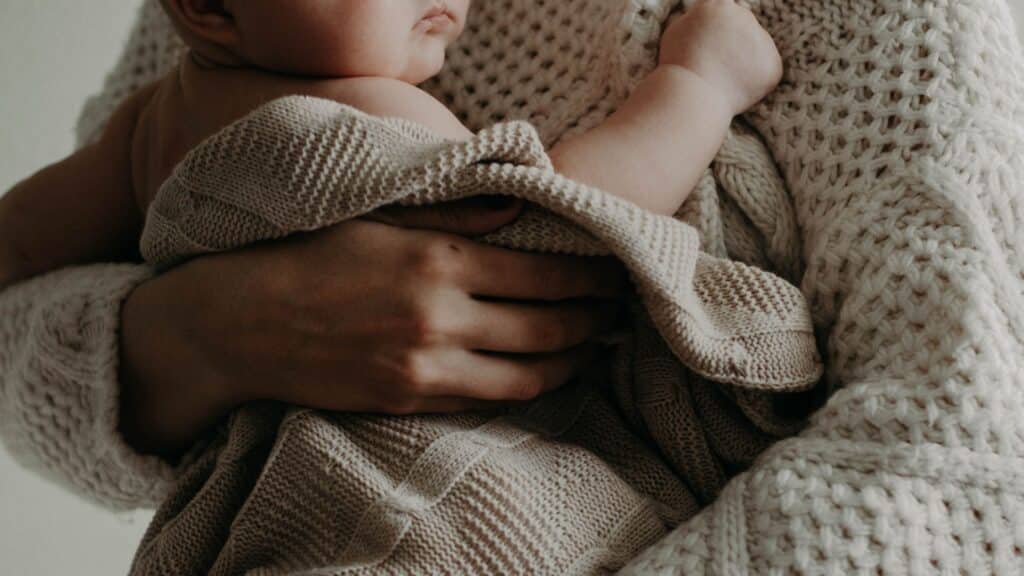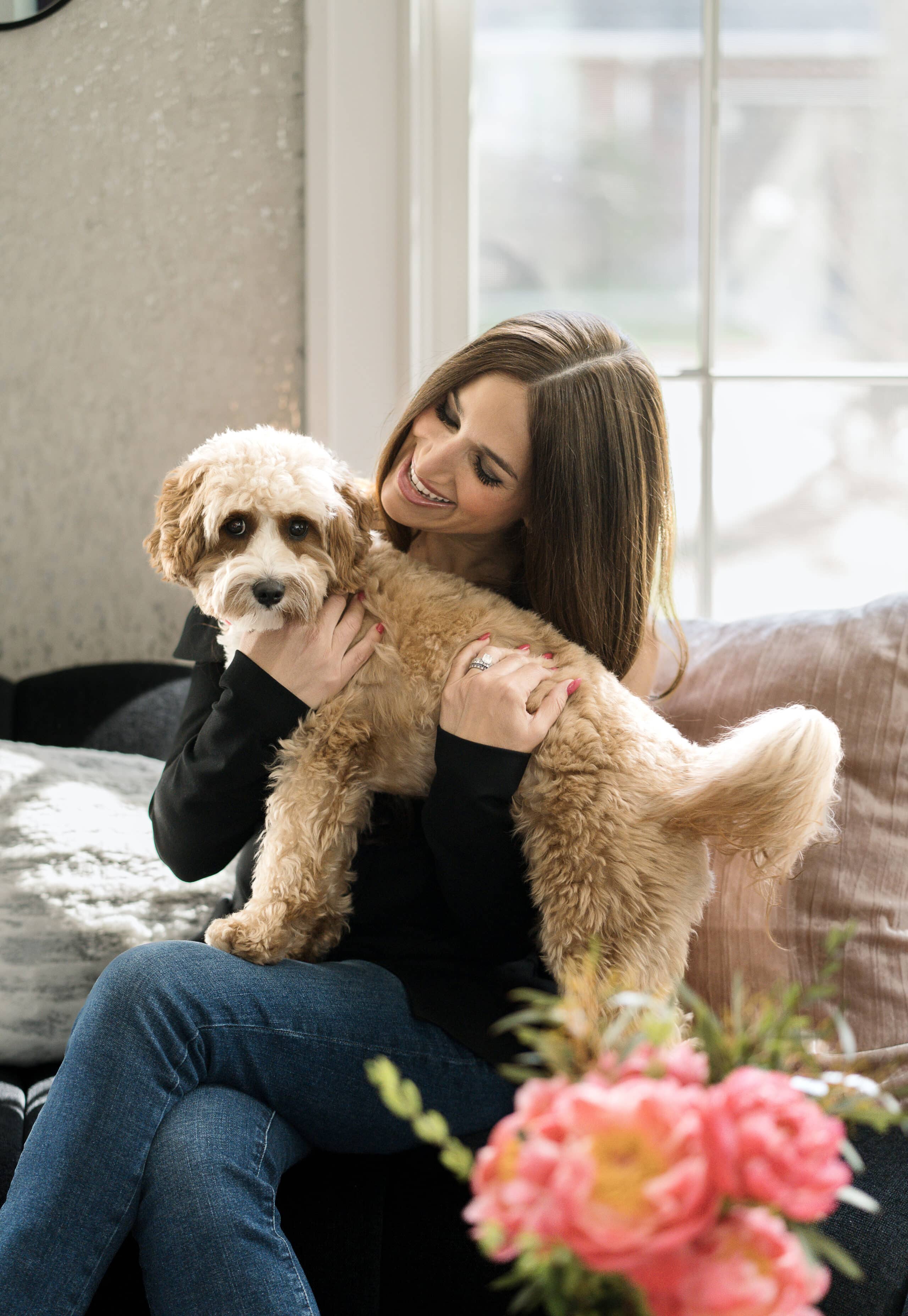The white noise is humming. The baby is down. You finally tiptoe out of the nursery, holding your breath and hoping the door doesn’t creak on your way out. You ease onto the couch, just starting to exhale—and then comes the cry. Sudden, sharp, and oh so frustrating.
If this sounds familiar, you’re not alone. Many parents and nannies experience this emotional tug-of-war known as separation anxiety—when a baby or toddler becomes upset or distressed because they’re away from their primary caregiver.
Separation anxiety in babies and toddlers is completely normal and developmentally appropriate, but that doesn’t make it easy.
In this guide, we’ll break down:
- What separation anxiety looks like in both babies and toddlers
- Why it often gets worse at night
- How long it typically lasts
- And evidence-based ways to support little ones through it (while preserving your own peace of mind)
Whether you’re a parent doing bedtime solo or a nanny helping a toddler through preschool drop-off, we’ve got you covered. Let’s start with the baby stage.
Signs of Separation Anxiety in Babies
Separation anxiety usually shows up around the time babies become more aware of the world. This cognitive leap helps babies understand you still exist when you’re out of sight, but that awareness can also trigger tears when you walk away.
Some of the most common signs of separation anxiety in babies include:
- Crying or fussing when you leave the room, even for a few seconds
- Clinging tightly during drop-offs, diaper changes, or hand-offs to another caregiver
- Refusing to be soothed by anyone else, even a familiar face
- Waking more frequently at night or struggling to fall asleep independently
- Being extra alert to your presence or departure during routines
These behaviors can feel sudden and intense, especially if your baby was previously easygoing with other caregivers. But they’re a normal part of development and a sign that your baby is building secure attachments.
If you’re seeing these signs, take a breath. It doesn’t mean you’ve done anything wrong. In fact, it means your baby feels safe enough to express their feelings with you.
Related: Sleep Regressions Explained: How Parents and Nannies Can Support Baby Together
When Does Separation Anxiety Start in Babies?
Most babies show signs of separation anxiety between 9 and 12 months. Some experience it earlier, especially if they’re hitting milestones ahead of schedule. Others may not display noticeable signs until closer to their first birthday.
This phase often aligns with a key developmental milestone: object permanence, which is the understanding that people and things still exist, even when out of sight. You’ll start to see this show up in play. Games like peekaboo become endlessly entertaining, and your baby may begin searching for toys you’ve tucked behind your back or under a blanket. It’s a sign their brain is growing, but it can also make separations feel more distressing.
Separation anxiety can ebb and flow depending on what’s going on in your baby’s world like teething, illness, starting childcare, or other developmental leaps. Even previously independent babies may suddenly become extra clingy.
Related: The Ultimate Guide to Helping Your Newborn Sleep
Signs of Separation Anxiety in Babies at Night
Nighttime often amplifies separation anxiety. The quiet, the darkness, and the long stretch of separation can feel overwhelming for babies who are just beginning to understand they’re on their own in the crib.
You might notice:
- Crying as soon as they’re put down, even if the bedtime routine went smoothly
- Needing to be rocked, fed, or held to fall asleep more than usual
- Frequent night wakings with difficulty settling unless you return
- Nap resistance or early wake-ups that seem tied to your absence
These behaviors are common and expected. They don’t mean your baby is regressing or manipulating you. They’re adjusting to new cognitive and emotional awareness, and looking to you for comfort and reassurance.
Related: The 5 Most Frequently Asked Pediatric Questions, According To Trusted Pediatricians
Tips to Help Babies with Separation Anxiety
Separation anxiety is a normal part of development. And while this phase is normal, it may make everyday routines like bedtime, daycare drop-offs, or just trying to drink a cup of coffee extra challenging.
Here are a few ways to help your baby feel more secure when you’re apart:
Create a consistent goodbye routine
A short, predictable routine—like a hug, a phrase (“Mama always comes back”), or a kiss on the hand—helps your baby know what to expect and builds trust over time. Try to stay calm and confident, even if they cry. Easier said than done, but worth the effort since babies are incredibly perceptive and often mirror the emotions of their caregivers.
Practice short separations
Start with brief periods apart, like stepping into another room and narrating your return: “I’m in the kitchen getting your bottle—here I come!” This helps reinforce that you do come back, just like in peekaboo.
Offer comfort items
A soft lovey, blanket, or piece of clothing that smells like you can offer reassurance when you’re out of sight. The American Academy of Pediatrics (AAP) refers to these as transitional objects and explains, “These items are part of the emotional support system every child needs in their early years.” So don’t worry that your baby will become “too attached” to their lovey or blanket. It’s a healthy coping tool! Just make sure any item you leave in the crib is safe and age-appropriate.
Stay consistent with caregivers
Whether it’s a parent, nanny, or grandparent, babies feel more secure when caregivers handle transitions similarly. Keep routines familiar, hand-offs calm, and encourage caregivers to use the same phrases or comfort strategies you use.
Be patient with sleep
Nighttime is often the hardest part of separation anxiety. If your baby is struggling to fall asleep or waking more often, offer gentle reassurance without creating completely new habits you’ll later have to undo. You might need to sit by the crib for a few extra minutes or offer a few more snuggles.
Above all, respond with empathy. You’re not “spoiling” your baby by comforting them. You’re teaching them that even when things feel uncertain, they’re not alone.
Related: Having a Nanny When You Work from Home: Tips to Make It Work
Signs of Toddler Separation Anxiety
While separation anxiety tends to peak in infancy, it can resurface in toddlerhood, often in new and more intense ways. Toddlers are more mobile, more verbal, and more opinionated. But they’re also still learning how to manage big feelings, especially around separation.
Common signs of toddler separation anxiety include:
- Crying, pleading, or clinging when you leave—even if they’re familiar with the caregiver or setting
- Regression in sleep or potty training, especially during times of stress
- Fear-based behaviors, like refusing to go into a room alone or follow a routine they previously handled well
- Anger or tantrums around drop-offs or transitions
- Difficulty concentrating or engaging in play after separation
These behaviors can be frustrating (and yes, exhausting), but they’re still rooted in the same emotional need: connection and security.
It’s also common for separation anxiety to flare up during transitions, like starting preschool, moving to a new home, welcoming a sibling, or recovering from an illness. Even positive milestones can stir up uncertainty and increase your toddler’s need for reassurance.
The good news? With the right support, toddlers can learn to navigate these feelings with growing confidence.
Toddler Separation Anxiety and Sleep
Sleep challenges are one of the most common signs of toddler separation anxiety. And one of the most exhausting for parents and caregivers.
By age two or three, many toddlers have strong sleep associations and routines. But when separation anxiety flares up, even the most predictable bedtime can turn into a struggle. Your toddler may suddenly refuse to fall asleep without you in the room, call out repeatedly after lights out, or show up at your bedside in the middle of the night.
Some sleep-related behaviors to watch for:
- Refusing to go to bed or stalling to avoid separation
- Crying or calling out as soon as you leave the room
- Night wakings followed by a need for physical closeness to fall back asleep
- Insisting that you stay in the room until they fall asleep (or all night)
While it’s tempting to overhaul your sleep approach when things unravel, consistency and compassion go a long way. Stick to your usual bedtime routine, offer extra reassurance as needed, and remember, this is a phase, not a failure.
Toddlers are learning to cope with big emotions and the realization that they can’t always be with you. Your calm presence, even in the face of protest, helps teach them that sleep—and separation—are safe.
Tips to Help Toddlers with Separation Anxiety
Toddler separation anxiety can feel bigger, louder, and more complicated than the baby stage, but the support strategies stay grounded in the same truth: toddlers need connection and consistency to feel secure. Here’s how to help your toddler through it:
Validate their feelings, even if the goodbye is brief
Acknowledge that goodbyes can feel hard. Try saying, “You really want me to stay. I’ll miss you too, and I’ll be back after snack time.” Validation doesn’t mean giving in. It means helping your child feel seen and understood.
Use visual cues and routines
Toddlers thrive on structure. A visual schedule, picture book, or simple countdown (“Two more songs, then it’s time for bed”) can help make transitions easier. Over time, predictability builds confidence.
Avoid sneaking out
As tempting as it is to disappear during playtime or after tuck-in, sneaking out can backfire and increase anxiety. Instead, give a loving, confident goodbye—even if it’s met with protest.
Reinforce separation through play
Pretend games like hide-and-seek or stuffed animal “drop-offs” give toddlers a chance to act out separation and reunion in a safe, playful way. These little moments help build emotional resilience.
Collaborate with caregivers
Whether it’s a nanny, grandparent, or daycare teacher, keep communication open and routines consistent. A shared approach gives toddlers the steady foundation they crave—even when their emotions feel anything but steady.
Separation anxiety may test your patience, especially when it disrupts bedtime or daycare routines. But with empathy, structure, and time, most toddlers grow through this phase feeling even more secure in their relationships.
Supporting Kids Through Separation Anxiety, Together
Separation anxiety in babies and toddlers is a normal (yet challenging!) part of development. Whether you’re navigating bedtime tears, daycare drop-offs, or clingy moments in the kitchen, it can be emotionally exhausting to care for a little one who wants to be near you. All. The. Time.
But remember: this phase is temporary, and it’s rooted in something good. Your child feels connected to you. That secure attachment is exactly what helps them grow into confident, independent humans over time.
For parents, nannies and other caregivers, teamwork is key. Keep communication open, routines consistent, and comfort strategies aligned. When caregivers respond with patience and empathy—even on the hardest days—kids feel safe, seen, and supported.
And if you ever feel stuck, know you’re not alone. This is hard, but you’re doing it well.



